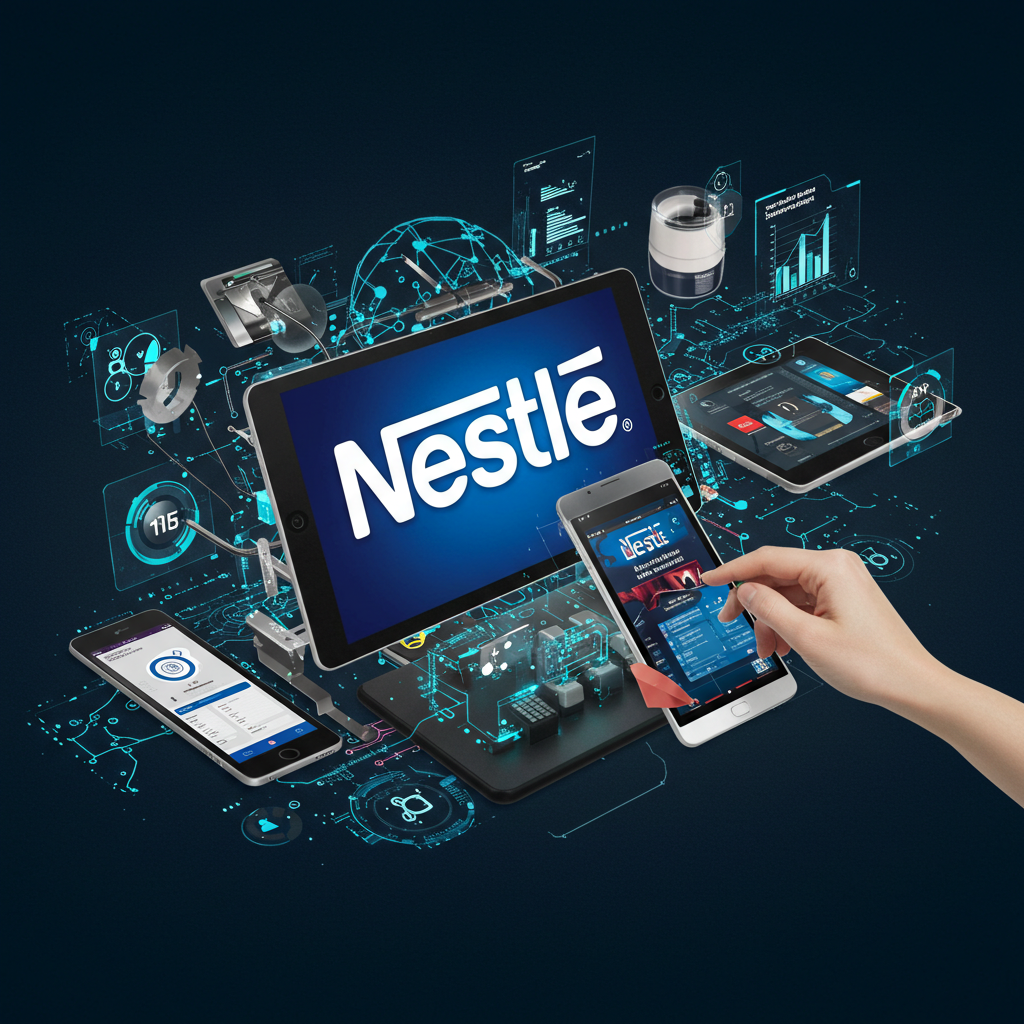Nestle, known for its iconic brands like KitKat, Maggi, and Nescafe, has undergone a digital transformation to remain competitive in today’s fast-changing consumer landscape. The company’s approach combines advanced data analytics, AI, and integrated digital channels to engage consumers, optimize marketing spend, and drive growth. The strategy aims to increase online sales (with a target of 25% of total sales online by 2025), shift a larger portion of the marketing budget to digital channels (up to 70%), and leverage first-party data (targeting 400 million records) to enhance personalization and ROI.
Strategic Objectives
Key goals of Nestlé’s digital marketing transformation include:
- Enhancing Consumer Engagement: Building personalized connections across diverse markets.
- Driving Sales Growth: Increasing online conversion rates and boosting overall revenue.
- Maximizing ROI: Leveraging data-driven insights to optimize advertising spend and measure performance.
- Balancing Media Investments: Integrating traditional media with digital channels to maintain brand equity while innovating with new technologies.
Nestle’s Digital Marketing Activities
Data-Driven & AI-Powered Strategies
- Customer Data Cloud & First-Party Data:
Nestlé has embraced a data-driven approach by implementing an enterprise Customer Data Platform (CDP) that collects and analyzes first-party data. This strategy not only enhances personalization but also enables real-time tracking of digital media performance, leading to more efficient marketing spend and improved ROI. - AI and Advanced Analytics:
The company leverages AI to optimize digital assets and campaigns. For example, using machine learning, Nestle fine-tunes creative messages and ad placements to reduce cost per click (CPC) and increase ad recall. This has translated into notable improvements in digital metrics, including up to a 66% return on ad spend across platforms.
Social Media and Content Marketing
- Multi-Platform Engagement:
Nestle maintains a robust presence across various social media platforms (Facebook, Instagram, Twitter) with tailored content strategies for each brand. Campaigns like KitKat’s global social media blitz and Nescafe’s “Now’s Good” storytelling initiative in Australia are prime examples of using digital storytelling to drive engagement and reshape consumer behavior. - Influencer Collaborations & Localized Content:
By partnering with local influencers and creating region-specific content (such as Nestle Middle East’s bilingual Ramadan chatbot campaign), Nestlé has effectively enhanced brand relevancy and consumer connection, driving increased website traffic and engagement metrics.
SEO & Website Optimization
- Search Engine Marketing:
Nestle’s SEO strategies have led to significant gains in organic traffic. A targeted content strategy—optimizing for high-volume keywords and creating value-driven content—helped achieve an 84% increase in organic traffic, further reinforcing the brand’s digital presence.
Measuring ROI
Nestle employs a rigorous measurement framework to gauge the effectiveness of its digital marketing efforts:
- Key Metrics Tracked:
- Conversion Rates: Monitoring the percentage of website visitors converting to customers.
- Cost Per Lead (CPL) and Return on Ad Spend (ROAS): Assessing campaign efficiency by comparing revenue generated against ad spend.
- Data-Driven Optimization:
The integration of real-time analytics tools (such as Google Analytics 4 and internal dashboards) enables Nestle to continuously refine its campaigns. For instance, improvements in digital media performance—such as a 25% uplift in ROAS and a 56% reduction in CPC—demonstrate how data insights directly impact ROI. - Case Example – Ramadan Chatbot Campaign:
In the Middle East, a Messenger chatbot campaign during Ramadan not only increased consumer interaction (with users spending 2.9× more time on the Nestlé website) but also drove a 35% increase in online sales. This campaign highlighted the value of interactive, personalized digital experiences in boosting both engagement and revenue
Challenges and Learnings
1. Balancing Innovation with Heritage
Integration of Traditional and Digital: Nestle faces the challenge of balancing its long-established brand values with the need for digital innovation. The company continues to invest in traditional media while reallocating resources to digital channels—a dual approach that supports both brand equity and agile marketing.
2. Organizational Transformation
Digital Acceleration Teams: To foster innovation, Nestle established Digital Acceleration Teams (DATs) that focus on rapid digital experimentation. This internal restructuring has not only improved agility but also enhanced cross-functional collaboration, ensuring that digital insights drive strategic decisions.
3. Data Privacy and Consumer Trust
Privacy-Preserving Marketing: With increasing emphasis on data privacy, Nestle has prioritized first-party data collection and privacy-preserving technologies. This ensures that personalization efforts are both effective and compliant with evolving regulatory standards.
Conclusion
Nestle’s digital marketing journey demonstrates that a well-integrated strategy—combining creative storytelling, data-driven insights, and advanced digital technologies—can yield substantial improvements in ROI. By continuously evolving its digital tactics, from personalized content and social media engagement to sophisticated data analytics and AI-powered optimizations, Nestle not only reinforces its market leadership but also provides a roadmap for other global brands aiming to thrive in a digital-first world.
This case study illustrates how a legacy company can successfully transition into a digital powerhouse, driving measurable results and sustained growth through innovation and strategic agility.
Sources:
- https://business.google.com/us/think/future-of-marketing/nestles-global-marketing-strategy-and-digital-transformation
- https://www.artefact.com/events/how-nestle-drives-marketing-efficiencies-and-roi-leveraging-the-customer-data-cloud/
- https://www.nestle.com/sites/default/files/2022-11/investor-seminar-2022-digital-transformation.pdf
- https://codedesign.org/nestle-case-study-codedesign/
- https://www.researchgate.net/publication/325386695_Exploring_social_media_monitoring_rooms_digitization_and_public_relations_A_case_study_on_Nestle%27s_Digital_Acceleration_Team

